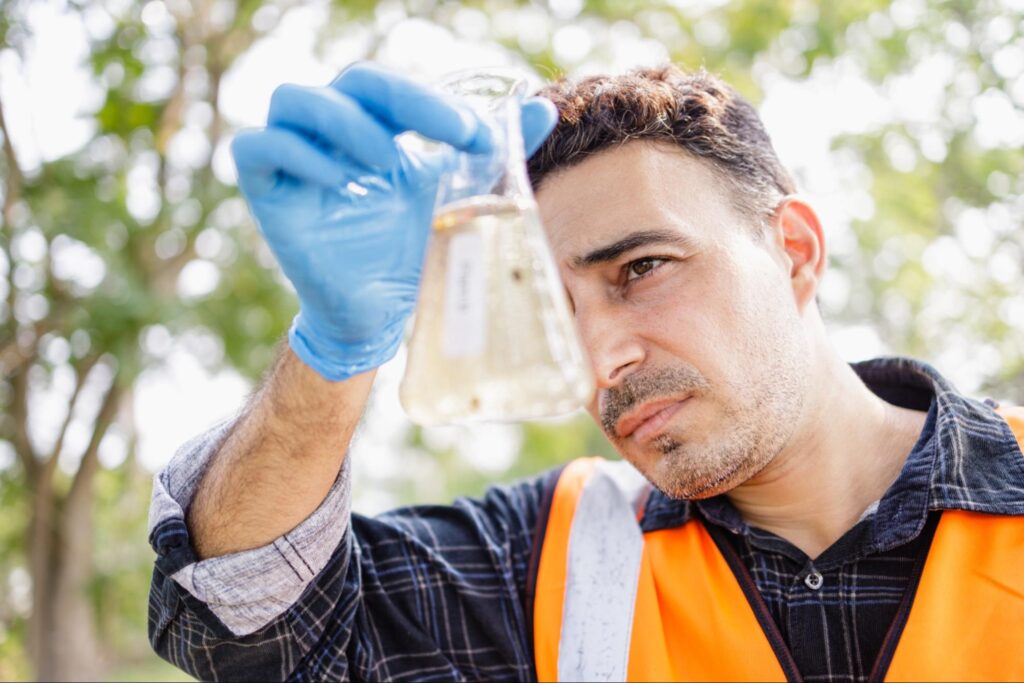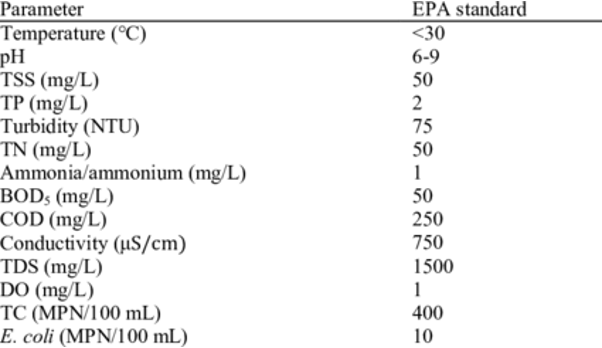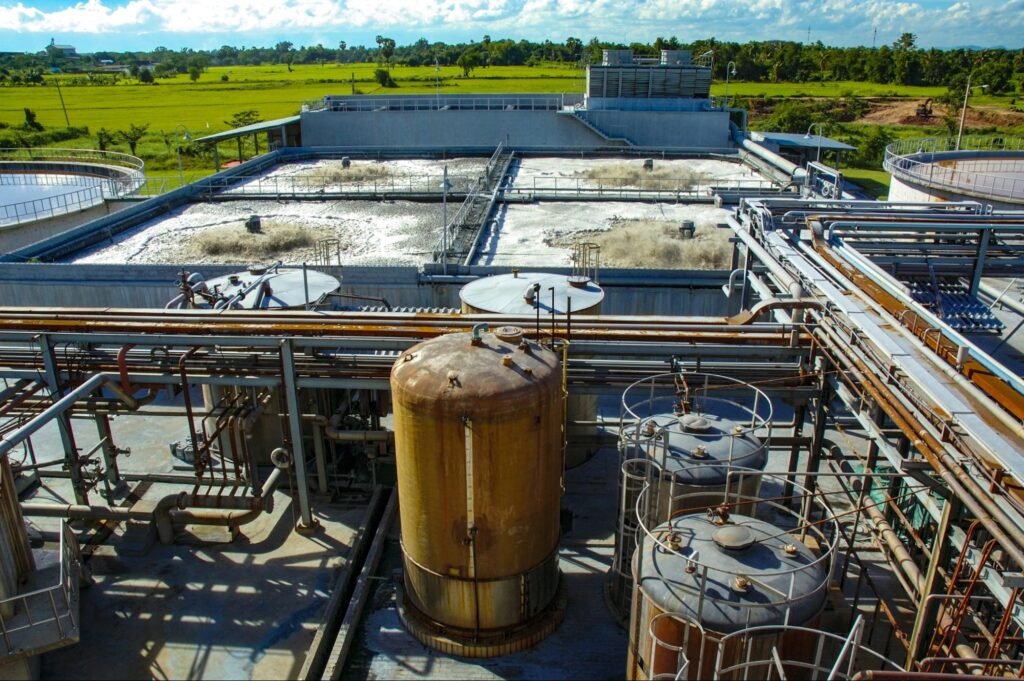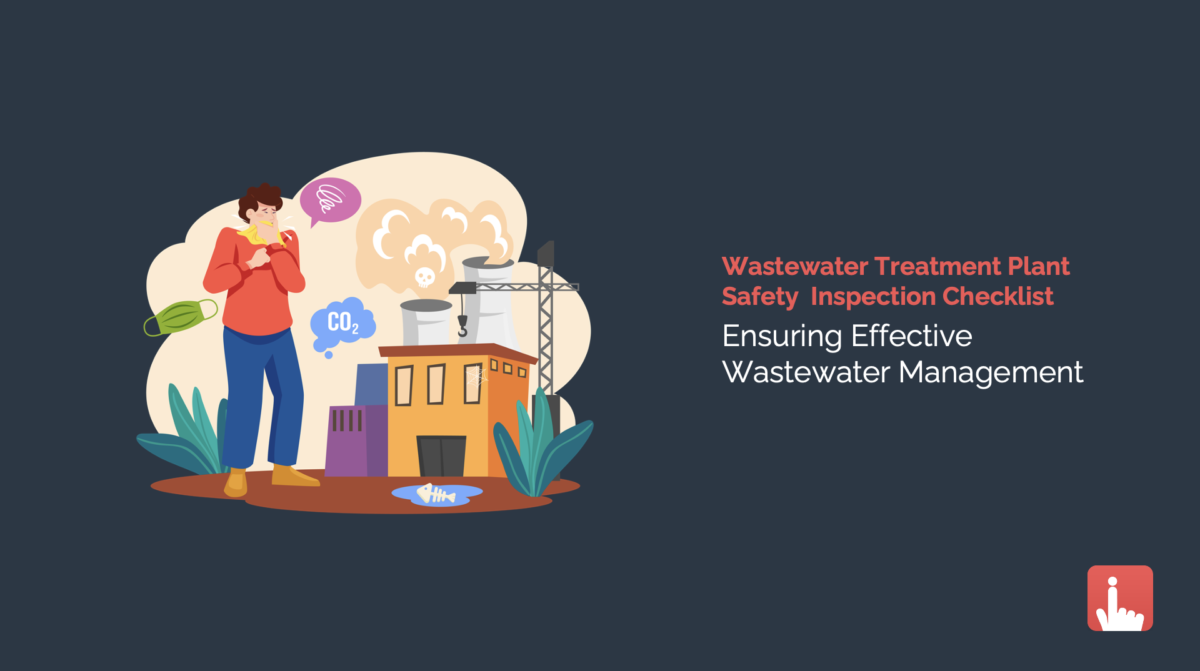Wastewater treatment plants play a vital role in keeping our waterways clean, and ESG ensures that these plants operate up to standards. Utilizing a wastewater treatment plant safety
inspection checklist helps ensure that water is adequately treated before it is released into the environment.
Table of Contents:
1. What is a Wastewater Treatment Plant?
2. The Role of Wastewater Treatment Plant
3. Wastewater Effluent Standards
4. How Do Wastewater Treatment Plants Work?
5. Ensuring Effective Wastewater Treatment Plants with FAT FINGER
What is a Wastewater Treatment Plant?

A wastewater treatment plant is a facility that processes sewage and wastewater from households and industries. The plant removes harmful substances from the water, making it safe to discharge into the environment.
The processes used in a wastewater treatment plant vary depending on the effluent treated. However, all plants typically use a combination of physical, chemical, and biological processes to remove contaminants.
Wastewater treatment plant or sewage treatment is typically carried out in three stages: primary, secondary, and tertiary. In the primary stage, screens remove coarse particles from the sewage. The secondary step involves the use of bacteria to break down organic matter. Finally, in the tertiary stage, the remaining contaminants are removed using a variety of physical and chemical processes.
Wastewater treatment is a complex engineering process that requires a deep understanding of various scientific disciplines. As such, highly trained engineers design and operate wastewater treatment plants.
The Role of Wastewater Treatment Plant
Wastewater treatment plants play an essential role in protecting our environment while being an integral component in the engineering and manufacturing sectors. These plants work daily to remove harmful pollutants from the water we use for drinking, cleaning, and even creating new products.
Wastewater is a by-product of many industrial processes, including those used to produce oil and gas. If not adequately treated, wastewater can contaminate water supplies, damage the environment and pose risks to human health.
Wastewater treatment plants remove contaminants from wastewater before it is released into the environment.They also help preserve water resources by recycling treated wastewater in other industrial processes. In addition, wastewater treatment plants play an essential role in the quality control of manufacturing products. By removing impurities from wastewater, they help to ensure that products meet stringent quality standards.
To protect our environment and health, wastewater treatment plants play a vital role in our society.
Wastewater Effluent Standards
Effluent is the water that is discharged from a wastewater treatment plant. Wastewater treatment plants must meet the standards set by the EPA (Environmental Protection Agency) to protect water quality.

These standards dictate the acceptable levels of various pollutants present in industrial wastewater before it is discharged into the environment.

The rationale behind these standards is to prevent water pollution and ensure that wastewater discharge will not adversely affect public health or the environment. To meet these standards, industries must implement wastewater treatment practices designed to remove pollutants from their effluent. Wastewater treatment practices can include physical, chemical, and biological processes, and they are often customized to meet the specific needs of each industry.
By adhering to Wastewater effluent standards, industries can help to protect our waterways and safeguard human health and the environment.
How Do Wastewater Treatment Plants Work?

The Wastewater Treatment Plant Process can be divided into three main steps: physical, chemical, and biological treatment.
Physical treatment involves the removal of impurities from the water, such as grit, grease, and other debris. Several physical treatment methods, including screening, grit removal, and sedimentation. Screening is typically used to remove large objects from the water, while grit removal removes smaller particles. Sedimentation is a process of settling in which heavier particles settle to the bottom of the tank while lighter particles float to the top. By removing impurities from the water, physical treatment helps to improve the overall quality of the wastewater.
Chemical treatment of wastewater is a process that uses chemical reactions to remove impurities from water. This treatment is often used with other methods, such as physical filtration or biological treatment. Chemical treatment can be used to remove a variety of impurities, including dissolved minerals, suspended particles, and pathogens.
The most common chemicals used in wastewater treatment are chlorine and oxygen. These substances are effective at disinfecting water and removing harmful bacteria. Chemical treatment can also be used to remove metals and other dissolved contaminants. In many cases, chemical oxidation breaks down complex molecules into simpler forms that other treatment methods can more easily remove. Coagulation is another standard chemical treatment method. This process uses chemicals to cause small particles to clump together, making them easier to remove from the water. Chemical treatment is vital in ensuring that sewage and other wastewater are safe for human contact.
The biological treatment uses bacteria and other organisms to break down pollutants into less harmful compounds. The biological treatment of wastewater is a process that uses living organisms to remove contaminants from water. Commonly used bacteria include aerobic and anaerobic bacteria. Aerobic bacteria require oxygen, while anaerobic bacteria can live without it. During biological treatment, wastewater is first aerated to provide oxygen for the bacteria. The bacteria then break down the organic matter in the water, removing nutrients and other contaminants. The treated water is then discharged into the environment, and the leftover sludge is removed and disposed of. Biological treatment is an effective way to clean water, and can be used for both domestic and industrial wastewater.
Wastewater treatment plants use a combination of these three steps to effectively treat sewage and ensure that the effluent is within standards. Wastewater Treatment is essential for protecting our waterways and safeguarding human health and the environment.
Ensuring Effective Wastewater Treatment Plants with FAT FINGER
Any industrial sector involving manufacturing must be concerned with wastewater treatment and quality. Whether you’re talking about oil and gas, pharmaceuticals, food, or chemical production, wastewater treatment is more than a legal obligation. It’s all about protecting the environment for present and future use.

While manual methods and paper-based checklists are still common practices in wastewater treatment plants, this approach has some disadvantages. For one, manually tracking and monitoring all the necessary data points can be challenging. This can lead to missed opportunities for optimization and improved efficiency. In addition, paper records can be lost or damaged, making it difficult to track long-term trends.
FAT FINGER digital technology can help overcome these challenges. One example is through a wastewater treatment plant safety inspection checklist, real-time data analytics to monitor wastewater treatment processes is possible. This information can be used to optimize operations and improve efficiency. In addition, FAT FINGER can help to track long-term trends and identify potential problems before they cause costly damage.
FAT FINGER was created with the goal of improving wastewater treatment plants and their operations. The software has features such as:
–creating customized wastewater inspection checklists from templates.
–assigning actions to different teams so that everyone in a plant understands what they need to do when it’s time for maintenance or repairs on any given piece of equipment
–gathering insights from past historical data into performance data which allows you to save both money by finding out where improvements can be made before costly risks occur
–generating high-quality reports quickly identifying issues right away, saving hours upon days worth of work if not weeks-records all the standard procedures for each step of the wastewater treatment process, available anytime and anywhere.
FAT FINGER is transforming wastewater treatment and offering new opportunities for improvement.

We want to ensure that your job is as easy as possible so you can focus on what’s important – keeping your wastewater treatment plant running smoothly.
Sign up for a free trial of FAT FINGER today!
About FAT FINGER:
Ensure front-line teams do their work correctly every time. Drag & drop digital procedures that unlock operational excellence.In seconds anyone can build and deploy enterprise-grade mobile applications using an easy drag-and-drop no-code builder.
FAT FINGER uses machine learning to coach app users in real-time to make safer and improved decisions.Try building your digital procedure on FAT FINGER for free @www.fatfinger.io


